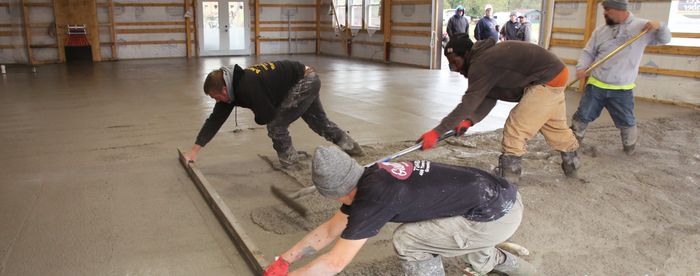Laying Concrete Pavers
For a driveway, walk, or patio, get the base right, and the rest of the job is straightforward.

Synopsis: Whether you need a new driveway, walk, or patio, there’s a concrete paver that can lead to a beautiful and durable job. Although there are hundreds of options on the market, they all share one characteristic: The quality of the job depends largely on the unglamorous work of properly preparing the paver base. Remodeling contractor Joe Cracco details his methods of excavation, compaction, and properly installing the gravel and sand base layers for a paver driveway and walk. Once the base is properly completed, Cracco tells the reader how to install pavers efficiently, compact them into the base, and then fill the spaces between them with stone dust.
My company, Modern Yankee Builders, specializes in remodeling. We end up doing all sorts of work, from framing to high-quality trim. Sometimes we even get to spend nice days outdoors, working on landscaping projects. This particular job was typical for us. It included a small kitchen addition and replacement of the old asphalt driveway with a new one made of concrete pavers. (A backyard patio or a sidewalk would use the same techniques.)
Concrete pavers offer a bunch of advantages for driveways and patios: A wide variety of styles and colors is available, uniform sizing eases installation, and aside from the excavation (which we subcontract), the few special tools needed are readily rented.

Designing for the site
Because the number of paver styles available is vast, visiting supply yards to review the possibilities and obtain samples is a good idea. A decent supply yard should be able to help with design and with determining how many of each size of paver are needed. A word of caution: Some pavers can be ordered only by the full pallet. So if I require a third of a pallet of, say, small squares to three pallets of rectangles, I’m out of luck. If my supplier quoted a price based on a per-paver basis, I may find out that what I thought was a $150 purchase now costs $450 because of that two-thirds of a pallet of small squares I don’t want. I need to find a place for those extra small squares or to change my pattern.

Where I work, patios usually don’t require a building permit; for driveways, however, some towns require the local public-works department to do an existing-conditions survey (sometimes they just snap a photo) prior to issuing a certificate allowing the work to proceed. When the new driveway is complete, someone returns to verify that you didn’t alter the size or location of the driveway’s intersection with the street. Other jurisdictions are much more restrictive, particularly for the first 20 ft. or so where a driveway meets the street. I always check local requirements before commencing work, and I start with a site survey if I’m going to be anywhere near the property lines.

Planning the excavation and fill depth was critical for making sure that the new driveway matched the height of the neighbor’s driveway. To have a clean edge to butt our pavers against, we needed to cut a straight line through the neighbor’s asphalt driveway and along the edge of the street. Two things were critical in cutting the asphalt. First, the cuts needed to penetrate the existing pavement completely or the excavator would hook the uncut asphalt and rip up big sections beyond the cut. Even after patching, this never looks right. Second, the cuts needed to be dead straight as well as perpendicular to each other or the job would look bad, forcing us to waste time trimming the full pavers to fit.
Joseph Cracco is a remodeling contractor from Cumberland, R.I. Photos by Andy Engel, except where noted.

To read the entire article, please click the View PDF button below.
From Fine Homebuilding #248
Fine Homebuilding Recommended Products
Fine Homebuilding receives a commission for items purchased through links on this site, including Amazon Associates and other affiliate advertising programs.

Jigsaw

Lithium-Ion Cordless Palm Nailer

FastenMaster Screw Bolt Fastening System

